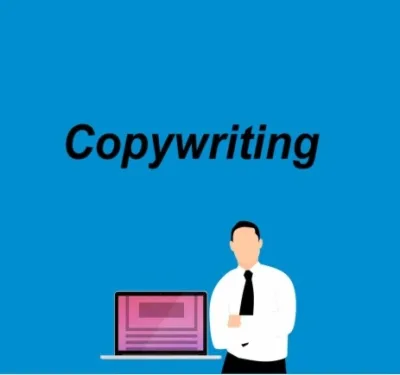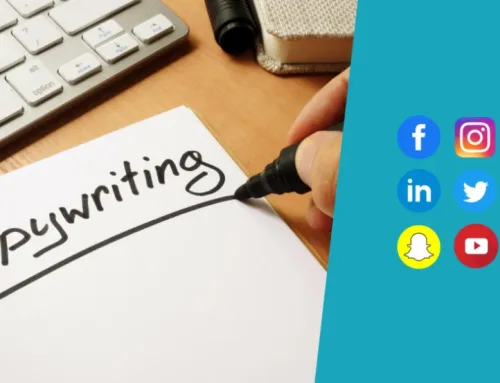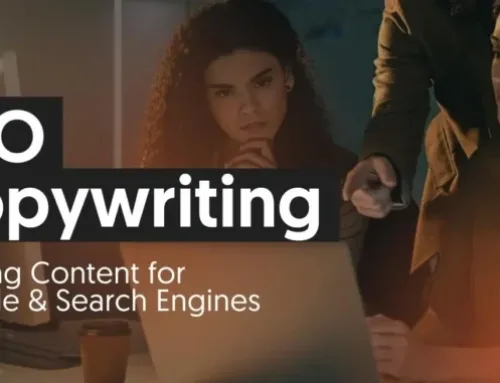In today’s vibrant music landscape, where listeners crave depth and connection, mastering Lyrics copywriting is the gateway to crafting songs that linger in hearts and minds—much like how a well-designed handbag type becomes a staple in someone’s wardrobe. Just as a minimalist leather tote (a versatile handbag type) caters to busy professionals, great Lyrics copywriting tailors words to resonate with specific audiences, turning a simple melody into a personal anthem. Whether you’re an aspiring songwriter or a seasoned artist refining your craft, understanding how to weave emotion, rhythm, and authenticity into your work is key—and surprisingly, drawing parallels to a beloved handbag type can clarify what makes Lyrics copywriting effective. For instance, a vintage crossbody (a timeless handbag type) stands out for its unique details, just as Lyrics copywriting shines when it includes vivid, personal touches that set it apart from generic lines. This guide explores essential tips for elevating your Lyrics copywriting, with subtle nods to how a standout handbag type mirrors the qualities of compelling song words.
Understanding Lyrics Copywriting
At its core, Lyrics copywriting is the art of using words to tell stories, evoke feelings, and complement music—similar to how a handbag type is designed to blend functionality with style. It’s not just about rhyming lines; it’s about creating a narrative that listeners can see, feel, and relate to, much like how a sleek clutch (a sophisticated handbag type) isn’t just an accessory but a statement of elegance. Effective Lyrics copywriting bridges the gap between melody and meaning, just as a spacious backpack (a practical handbag type) bridges the gap between utility and fashion. For example, a songwriter writing about nostalgia might use Lyrics copywriting to describe the smell of old books or the sound of a childhood door creaking—specific details that, like the stitching on a luxury handbag type, make the work feel intentional and memorable. Without a clear grasp of Lyrics copywriting fundamentals, even the catchiest melody risks feeling empty, just as a poorly designed handbag type fails to meet its user’s needs.
The Importance of Emotion in Lyrics
Emotion is the heartbeat of Lyrics copywriting—and it’s what makes a song stick, much like how a cozy fur-lined tote (a warm handbag type) feels like a comfort to its owner. Listeners turn to music to feel seen: joy, heartbreak, hope, or nostalgia. Great Lyrics copywriting taps into these universal emotions, just as a waterproof messenger bag (a reliable handbag type) caters to a commuter’s need for dependability. For instance, a song about lost love might use Lyrics copywriting like, “Your coffee mug still sits on my shelf—cold, like the last words you said,” which evokes sadness through a small, relatable detail. Similarly, a song about celebration could include lines like, “We danced until the streetlights came on—feet sore, but smiles stuck like glue,” capturing joy’s warmth. Ignoring emotion in Lyrics copywriting is like selling a handbag type without mentioning its most appealing feature: it may look nice, but it won’t resonate deeply with anyone.

copywriting
Key Elements of Effective Songwriting
Effective Lyrics copywriting relies on three core elements—clarity, imagery, and consistency—all of which mirror the design principles of a great handbag type. Clarity ensures listeners understand the song’s message: just as a handbag type’s purpose (e.g., “for travel” or “for work”) should be clear, so should a song’s theme. Avoid vague lines like “I feel so lost”; instead, use Lyrics copywriting like, “I walk past our favorite café—every sign feels like a ‘where are you?’” Imagery paints a picture: compare it to a handbag type with unique hardware (e.g., a vintage lock or colorful tassel) that catches the eye. Lines like “The sunset painted the sky in peach and gold” make listeners see the moment. Consistency keeps the song cohesive: just as a handbag type’s material and design match (no leather straps on a canvas backpack), Lyrics copywriting should maintain a consistent tone—playful, somber, or hopeful—throughout.
Techniques for Crafting Memorable Hooks
A hook is the most memorable part of a song—and in Lyrics copywriting, it works like the standout feature of a handbag type, such as a bold print or a signature clasp. It’s the line listeners sing along to, so it needs to be catchy, emotional, and tied to the song’s core message. For example, if a song is about resilience, a hook might be: “I fall, but I get back up—like a handbag type that outlasts the years.” This line is simple, uses a relatable metaphor (a durable handbag type), and reinforces the theme. Another technique is repetition: just as a luxury brand repeats its logo on a handbag type, repeating a key phrase in a hook (e.g., “You’re my favorite song”) makes it stick. Keep hooks short—1-2 lines—and use conversational language; overly complex lines are like a handbag type with too many zippers: confusing and hard to use.
The Role of Rhythm and Rhyme in Lyrics
Rhythm and rhyme are the backbone of Lyrics copywriting, much like the structure of a handbag type (e.g., straps, pockets, closures) that holds it together. Rhythm matches the song’s melody: a fast-paced pop song needs snappy, short lines, while a slow ballad works with longer, flowing phrases. Think of it as choosing a handbag type for an occasion: a mini clutch (small, sleek) for a party, a tote (roomy, casual) for a picnic. Rhyme adds musicality, but it shouldn’t feel forced. Perfect rhymes (e.g., “heart” and “start”) are like a classic handbag type—timeless and familiar—while slant rhymes (e.g., “light” and “find”) are like a trendy handbag type—fresh and unexpected. For example, “The night is dark, but I see your light—you make everything feel right” uses a slant rhyme that feels natural. Forcing a rhyme (e.g., “I love you so, let’s go to the show”) is like a handbag type with a mismatched strap: it stands out for the wrong reasons.
Finding Your Unique Voice as a Lyricist
Your unique voice is what makes your Lyrics copywriting distinct—just as a designer’s signature style makes their handbag type recognizable (e.g., a specific color palette or stitching pattern). It’s the combination of your experiences, tone, and perspective that no other lyricist can replicate. To find it, write about what you know: your childhood, your struggles, your joys. If you’re passionate about sustainability, for example, weave that into Lyrics copywriting: “I carry my heart like a reusable tote—this handbag type and I, we keep the world afloat.” Don’t try to copy other lyricists; it’s like trying to mimic a luxury handbag type—it will never feel authentic. Experiment with different tones: playful, poetic, or straightforward. Over time, your voice will emerge, making your Lyrics copywriting as unique as a one-of-a-kind handbag type.
Analyzing Successful Song Lyrics for Inspiration
Analyzing hit songs is a great way to improve your Lyrics copywriting—just as studying popular handbag type designs can inspire a new accessory line. Pick a song you love and break down its lyrics: What emotion does it evoke? How does it use imagery? What makes the hook memorable? For example, Taylor Swift’s “All Too Well” uses detailed imagery (“a scarf left at your sister’s house”)—much like a handbag type with a unique detail that tells a story. Notice how the lyrics flow with the melody, and how the chorus reinforces the theme. You can also look for how songwriters incorporate relatable moments, like a fight with a friend or a quiet morning coffee—these are the “functional features” of Lyrics copywriting, just as pockets and straps are functional features of a handbag type. Use these observations as inspiration, but always add your unique twist.

copywriting
Common Mistakes to Avoid in Lyrics Writing
Even experienced lyricists make mistakes—but avoiding them can elevate your Lyrics copywriting, just as fixing a flawed handbag type (e.g., a loose strap) improves its quality. One common mistake is being too vague: lines like “I’m happy now” don’t give listeners anything to connect with, just as a handbag type described only as “nice” doesn’t tell buyers why they need it. Another mistake is forcing rhymes, as mentioned earlier—this disrupts the song’s flow and feels inauthentic. Also, avoid overusing clichés (“love is a rollercoaster”); they’re like a generic handbag type—everyone has one, so it won’t stand out. Finally, don’t ignore the melody: Lyrics copywriting should complement the music, not fight it. Writing a slow, emotional verse for a fast rock song is like putting a formal clutch with athletic wear—it doesn’t fit.
Tools and Resources for Aspiring Lyricists
There are plenty of tools to help you refine your Lyrics copywriting—just as there are tools to design or customize a handbag type. Rhyme dictionaries (like RhymeZone) can help you find natural rhymes without forcing them, while lyric-writing apps (like Genius Lyric Pad) let you organize your ideas and match them to melody tempos. Reading books on songwriting (e.g., “The Art of Songwriting” by Ed Bell) is like studying a handbag type design book—it teaches you the fundamentals while inspiring creativity. You can also join songwriting workshops or online communities (like Reddit’s r/Songwriting) to get feedback from other lyricists—this is like asking a fashion expert for advice on a handbag type; their input can help you spot flaws and highlight strengths. Remember, tools are just aids—your unique voice and emotion are what will make your Lyrics copywriting truly special.
Elevating Your Lyrics Copywriting Skills
Mastering Lyrics copywriting is a journey—one that requires practice, creativity, and a willingness to learn, much like perfecting the design of a signature handbag type. By focusing on emotion, clarity, and your unique voice, you can craft songs that resonate with listeners long after the music stops. Just as a well-made handbag type becomes a beloved companion, great Lyrics copywriting becomes a part of someone’s story—whether it’s a song they play on a bad day or one they dance to at a celebration. Remember to use the tools and resources available, avoid common mistakes, and draw inspiration from the world around you—even from a simple handbag type that catches your eye. With time and effort, your Lyrics copywriting skills will grow, and you’ll be able to turn your thoughts and feelings into songs that captivate, connect, and endure—just like a timeless handbag type.


